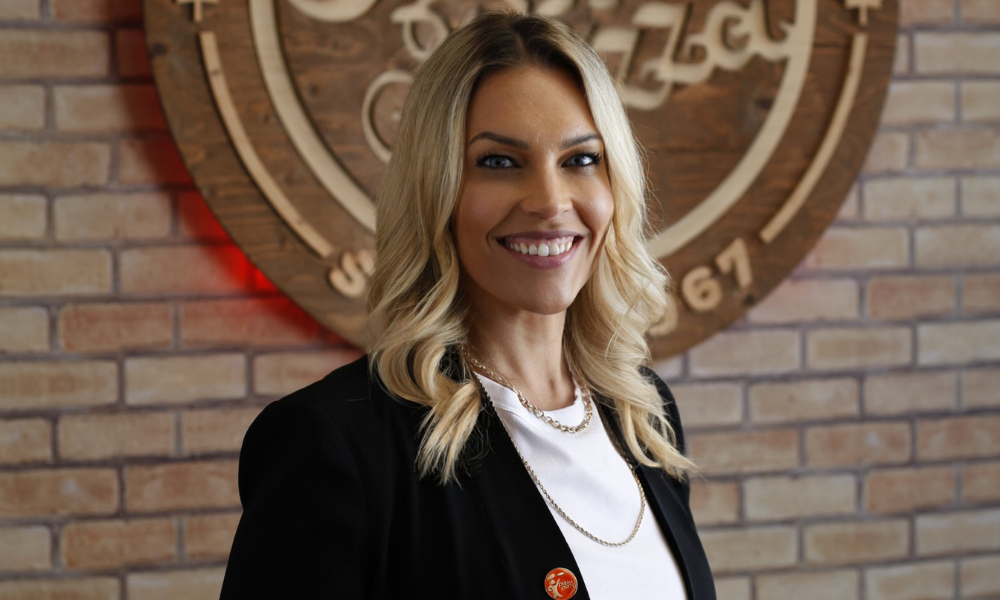HR leader Amy Silverstein of Pizza Pizza talks about the importance of balancing culture and strategy

Back in the early 2000s, Amy Silverstein worked at the Gap, going from a sales associate to manager over her nine years there. And when she moved over to Walmart Canada in 2014 for four years, she went from being a talent acquisition specialist to HR manager.
By 2019, Silverstein had become vice president of talent at transportation company National Express.
But it was in 2021 when she was proud to move to a truly Canadian brand: Pizza Pizza.
Taking on HR leadership at Pizza Pizza
Silverstein became senior director of people at the pizza chain, which has roughly 200 corporate employees, along with about 3,000 restaurant employees at nearly 800 franchise locations.
One big reason for the change in role was the Pizza Pizza brand, she says.
“It’s just a brand that I've resonated with. I think one of my favourite parts of working for Pizza Pizza is when I tell people where I work, everybody has a story to tell about Pizza Pizza — there's some memory [there].”
Further to that, Silverstein was looking forward to leaving a footprint at an organization that she grew up with.
“And then when I talked to the senior leadership team at Pizza Pizza, they were in a place where they have really shifted into this people-driven focus. And, of course, that's what I was really passionate about,” she says.
“Our CEO, Paul Goddard, his philosophy is very much aligned with mine on… what makes us stand out from our competitors is our people.”
Driving results through people
As Silverstein progressed through her career, becoming more seasoned in leadership roles, she says she realized that driving results was always done through people, and engaging people.
“I've always been a big believer that when you're leading a team, or when you're working in a place where you can influence people, you're always going to drive results through a positive experience, through training, development, through coaching conversations, through creating this culture that people want to thrive in, and where they feel like they can contribute.
“So, that was my decision to move into HR where I can really focus on what I love doing the most about my job.”
Balancing culture and strategy
According to Silverstein, at a healthy organization with strong employee engagement and satisfaction, both culture and strategy should be prioritized.
Understandably, on the operations side, there is tangible pressure to deliver immediate results, she says, and strategy is the predominant focus to achieve results.
“So, culture gets relegated to the secondary priority with a misconception that culture is this nebulous or long-term play without immediate benefit,” she says.
“But, at Pizza Pizza… a philosophy that we've been building our success on is we believe that culture is really a foundation that enables and sustains strategy in driving the behaviours that lead to our strategic goals being achieved.”
A big part of that culture is employee engagement and DEI, which the company focuses on through employee surveys and programs that are meant to give people a voice.
“We have been very intentional about taking this feedback and really listening and making changes based on the feedback,” says Silverstein. “But, at the same time, we do run a business, and we need to make sure that we have some tangible outcomes that we can relate back to our strategy as well.”
For example, looking at the issue of innovation: was there feedback that could provide insights on how to provide opportunities for people to be more innovative at Pizza Pizza?
And the work is ongoing, she says.
“We have to be comfortable with the fact that we are never going to do a survey and be satisfied with those results, and move on thinking that we've accomplished everything.”
‘Blind spots’ to diversity and inclusion
Silverstein is also a strong advocate for diversity and inclusion. To that end, in 2021, Pizza Pizza started a DEI council and in doing its first DEI survey, the company found it was “very organically diverse,” says Silverstein, with a workforce made up 60 per cent racialized people, while 30 per cent identified as gender-diverse.
“When you think about a lot of the demographics that are the easy places to focus on, when you're starting DEI work, we had it — we very organically had built that culture and had built that workforce already” she says. “So, we needed to look in other places that people said were important to them.”
But many employers have blind spots when it comes to DEI, says Siverstein, meaning places they might not necessarily look at first.
As an example, Pizza Pizza has a lot of data through its HRIS, such as information on benefits usage, tenure, and vacation and sick time. So, it’s about understanding how to use those insights in a way that’s useful, she says.
“Do we have more team members who are starting families? Do we have a workforce that is aging and do we need to start supporting them in a different way that supports transition to retirement or people who are caregivers?”
It might not be the first place that companies or councils might think to look for DEI strategies or the work they're going to do, says Silverstein, but “we came up with these strategies just from digging into data and looking at it from a lens that we may have not looked at it before.”
Delving into the data led Pizza Pizza to realize it needed to do more around mental health, for example, so it has brought in speakers to cover the topic, along with holding a DEI festival, she says.
“A lot of the activities are focused around mental health and resilience and work-life balance.”




